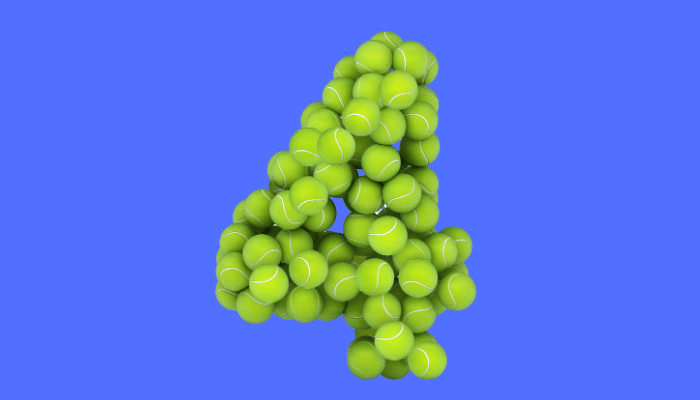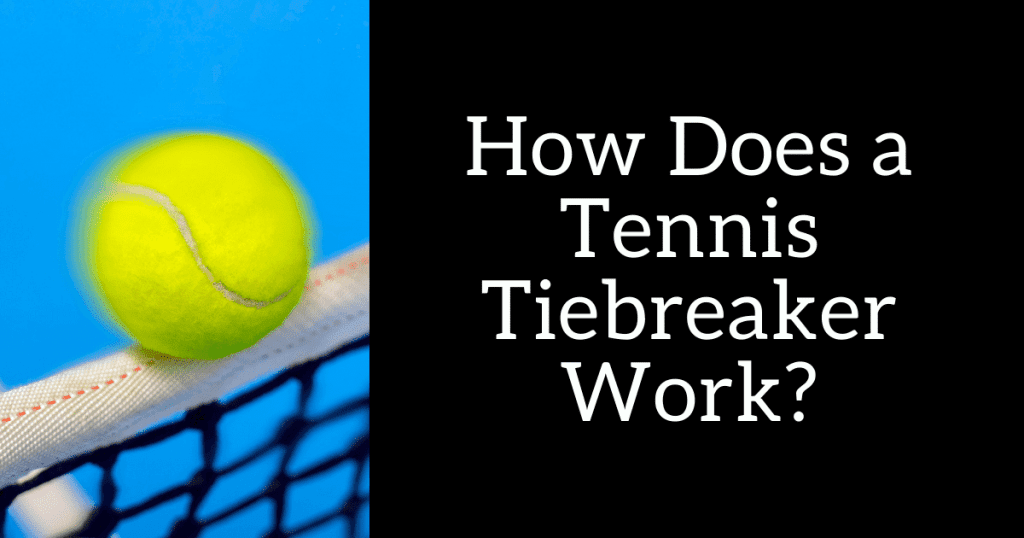When competing in sports, ending up with a tie is a bummer. When I compete or watch a competition on tv, I’m looking for a definitive winner.
Lucky for tennis fans, a tennis match ends with a definitive winner and loser for every match. It may take a while to get there, but at the end of the day, only one competitor is victorious.
Since tennis relies on one player winning a game or set by a margin of two, past tennis matches used to be quite a commitment. 12-10, 9-7, 13-11? Possible set scores back in the 1950s.
Tiebreakers were invented to help speed up the game – to make tennis more appealing to both players and fans by removing advantage sets when the score in sets was very tight.
Contents
What the Heck is an Advantage Set?
An advantage set requires that one player win the set by a margin of two games after having won at least 6 games.
If a tie is present at 6 games all, the set continues until the margin of two is reached. No ties and thus no tiebreaks. That’s an advantage set.
The set score of an advantage set could be 13-11 or 29-27.
Tiebreakers were brought into tennis to eliminate marathon matches of multiple advantage sets that went quite a distance.
What is a Tiebreaker in Tennis?
Tiebreakers are a component of the odd tennis scoring system. In tennis, a player must win a set by a margin of two games. A tennis tiebreaker is played when the game score of a set is 6 all (6-6) to help expedite the conclusion of the set.
Rather than continue a set until the two-game margin exists, tiebreakers were invented so there’s a definitive end when the set is tight.
Are all Tennis Tiebreaks the Same?
No. All tiebreakers are not the same. There are two main types of tennis tiebreakers which include the 7/12-point tiebreaker and the 10-point tiebreaker.
Today, the 7-point tiebreaker is the most common in tennis matches. This tiebreaker is played until one player scores at least 7 points against their opponent with a margin of 2 points.
The 7-point tiebreaker is officially known as the ‘USTA 12-point tiebreaker’ because the least number of points played with the score the closest is 7-5. Since 7 + 5 = 12, it’s also known as a 12-point tiebreaker.
Because you need to win at least 7 points, most tennis players refer to it as a 7-point tiebreaker.
Similar to a 7-point tiebreaker, the 10-point tiebreaker works in the same way, but the number of points needed is 10 rather than 7. As always in tennis, you cannot win a tiebreak unless you have a margin of two points.
Just like the score in a set, a 7-point tiebreaker can’t end with a score of 7-6.
If the players reach a score of 6 all (points each), the tiebreaker continues until one player wins by a margin of two points.
Who Serves First in a Tiebreaker?

The serve rotation in the set is continued when a tiebreaker begins.
If player A served the game that tied the score at 6-6 in the set, player B begins the tiebreaker as the server.
What’s the Service Rotation in a Singles Tiebreaker?
Understanding the serve on a tiebreaker may seem a bit confusing at first, but once you understand the rotation, it is not very complicated.
Other than the first point, each player serves for 2 points and then is the returner for 2 points.
To neutralize the advantage of serving first, the first player to serve in the tiebreaker only serves one point.
Player 1 begins the tiebreaker and serves one point from the deuce court.
Player 2 serves points 2 and 3 starting on the ad side of the court.
Return back to Player 1 who serves points 4 and 5 starting on the ad side of the court.
This rotation of serving continues until one player has at least 7 points with a margin of 2 points over their opponent.
How Does the Service Rotation Work in a Doubles Tiebreaker?
There are four people on the court so the serving rotation is slightly more complicated, but not too much so.
The team that begins the tiebreak serves only one point. From there, the serving goes back and forth between teams, alternating between both players on each team.
If doubles team one has players A and B and the opposing team has players C and D, here’s how the serving could play out.
Let’s say player A from team one begins the tiebreaker. They’ll serve one point from the deuce court and then serving switches to the other doubles team.
The serving switches to team two. Player C serves points 2 and 3 starting on the ad side of the court.
The serving goes back to team one. Player B serves points 4 and 5 starting on the ad side of the court.
The serving switches back to team two. Player D serves points 6 and 7 starting on the ad side of the court. All players have now served. The pattern starts over again with player A until the tie break has concluded.
There is an end change after point 6. Covered below in the FAQs!
Do All Grand Slam Tournaments Use Tiebreakers in the Same Way?

No. The four major grand slam tournaments handle tiebreakers differently. They’ve got to keep things spicy!
In the Australian Open, the final set in both men’s and women’s matches (fifth set and third set respectively) end with a 10-point tiebreaker when the set score is leveled at 6 games all. A 10-point tie break is often known as a super tiebreaker because it’s more extensive than a 7-point tie breaker.
At the French Open, 12-point tiebreakers (first to 7 points winning by 2 points) are used for all sets but the deciding set. In the final set, an advantage set is played so one player must win by two games.
Wimbledon is similar to the French Open in that tiebreakers are used for all sets but the final set of all matches. However, a 12-point tiebreaker isn’t played until the set score is 12 games all rather than 6 games all.
At the US Open, the 12-point tiebreaker is used in the event of a set score of 6 games all for all sets played.
Frequently Asked Questions
Do You Change Ends of the Tennis Court During a Tiebreak?
Yes. Ends are changed when the point score sums up to 6 or multiples of 6, i.e., 4-2, 6-6, 9-9, until the tiebreaker concludes.
When the points add up to six, that’s smack dab in the middle of one of the player’s two points to serve. Even so, the players change ends and the second serving point for the server occurs.
Ends are changed after every tie break since it completes the end of the set with an odd count of games. When the count of games in tennis is an odd number, ends are changed.
How is the Set Score Recorded When a Tiebreaker is Played?
At the conclusion of a tiebreaker, the set score is always recorded as 7-6, with point score listed in parenthesis. A recorded score of 7-6 (4) would mean that the set tiebreak score was 7-4. A recorded score of 7-6 (11) would mean that the tiebreak score was 13-11.
Who Invented the Tennis Tiebreaker?
The tiebreaker was invented by Jimmy Van Alen.
It went through a few iterations, but coming up with a solution to end marathon sets won by two games started with Mr. Van Alen.
Breaking Ties…
Just like with tennis game scoring, there are some nuances with tiebreakers in tennis. But they work to keep tennis matches exciting and somewhat reduce marathon matches.
Whether you’re on court trying to decide a set or match or watching on tv, now you’ll be a pro on how a tennis tiebreak works.
